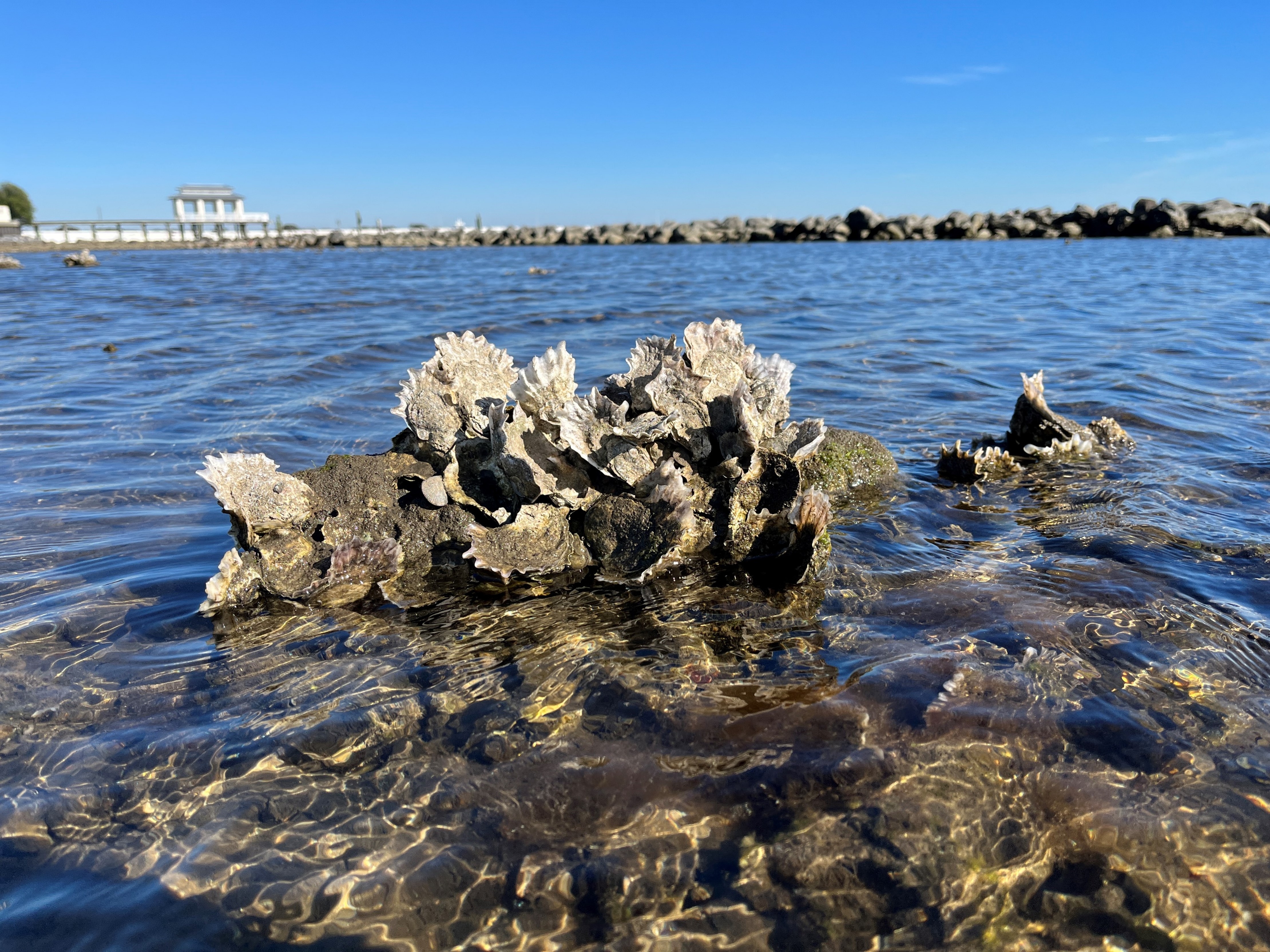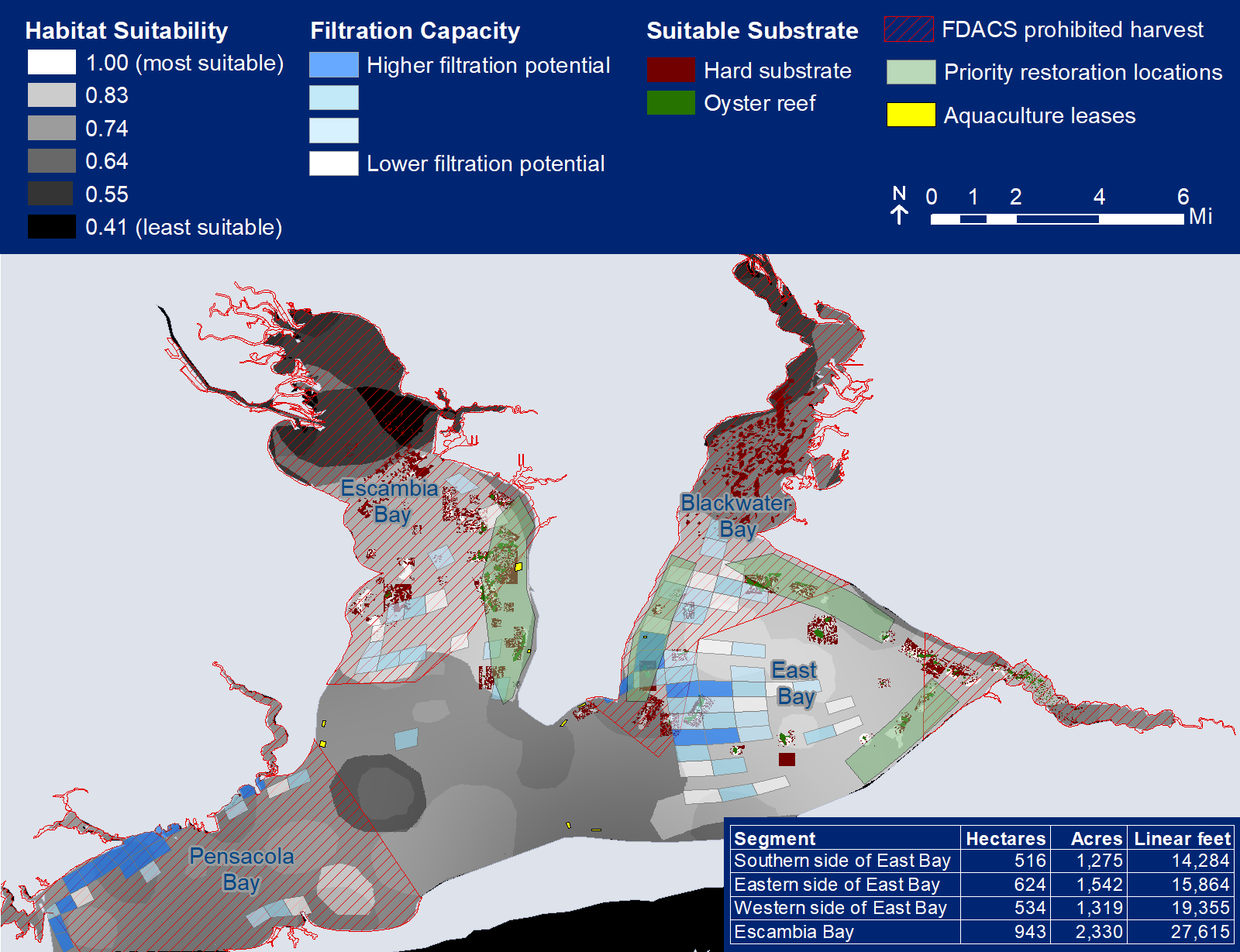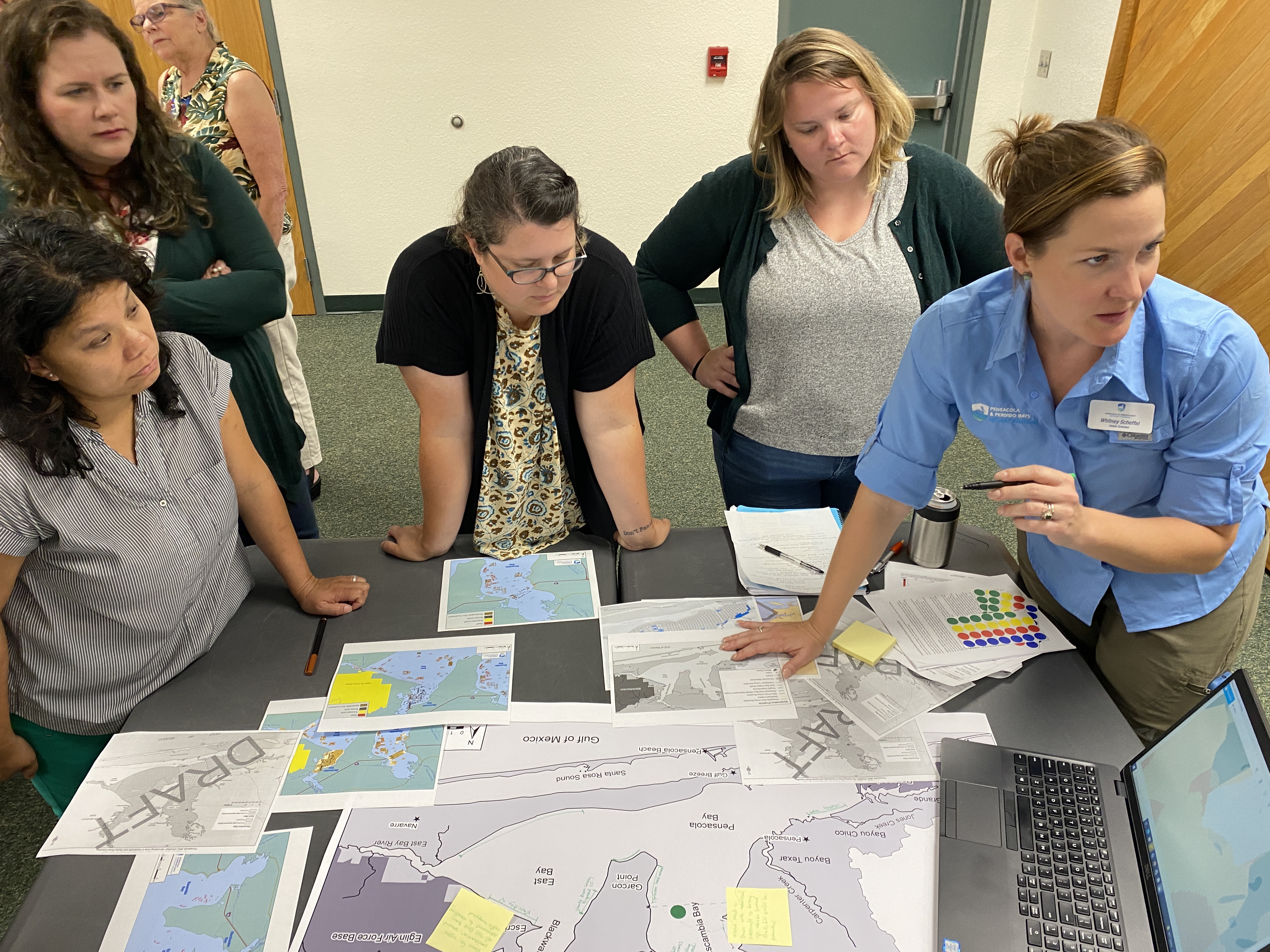Pensacola Bay Oyster Restoration Initiative

Objective: The Pensacola Bay Oyster Restoration Initiative establishes a transformational vision to restore 600-hectares (1,482 acres, the size of approximately 1,482 football fields) of oyster habitat in the Pensacola Bay System over the next ten years to enhance ecosystem resilience, rebuild a sustainable fishery, and improve economic vitality.
Funding: $10.9 million NOAA Transformational Habitat Restoration and Coastal Resilience Grant, $275,000 Florida Legislative Appropriation
Partners: The Nature Conservancy in Florida, Florida Fish and Wildlife Conservation Commission, Florida DEpartment of Environmental Protection, Santa Rosa County
Years: 2023-2027
Work to be completed
- Design and permit 600-hectares (1,482 acres) of oyster habitat restoration
- Construct Phase I of the Initiative, targeting up to 100 ha. of oyster habitat restoration (the size of about 247 football fields
- Complete a sediment load assessment to aid in prioritizing oyster restoration locations
- Design and permit the Sandy Hollow Gully Restoration Project in Santa Rosa County that will reduce direct sediment inputs into the Escambia River
- Implement a Living Shoreline Cost Share Program

Oyster Restoration Vision Map
Past work completed:
- Bottom Type Mapping: Between 2020 and 2021, PPBEP and The Nature Conservancy contracted with a Gulf Coast marine surveying firm to map known and suspected areas of subtidal and intertidal oyster reef habitat within the PBS using a combination of side-scan sonar, poling, and diving techniques.
- Habitat Suitability Model: A Habitat Suitability Model (HSM) has been developed to identify the most prime locations for oyster restoration.
- Water Filtration Model: Project siting and restoration priority will be informed by a water filtration potential model of oysters. The model combines the HSM, a hydrodynamic model, and an oyster filtration model.
- Vision Mapping: Utilizing the outputs from the three products above, PPBEP hosted an Oyster Restoration Site Selection or “Vision Mapping” Workshop in June 2022 with wild harvesters, aquaculture operators, Tribe members, resource managers, and academic experts to begin identifying priority locations for siting restoration based on fishery, habitat, and ecosystem service benefits.

Oyster Sub-Committee Oyster Vision Mapping Workshop




